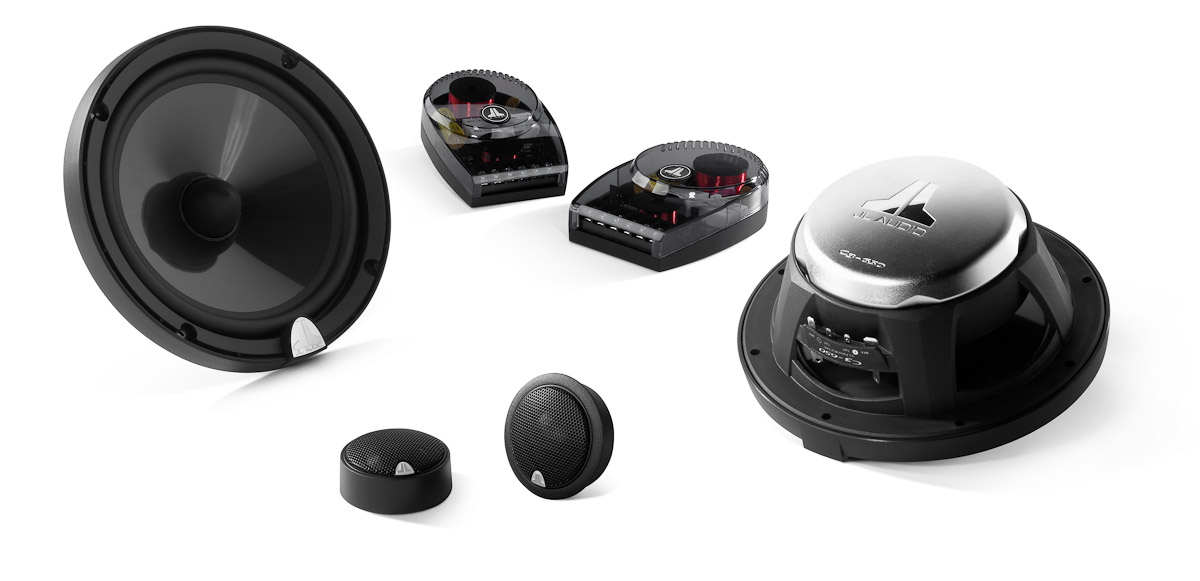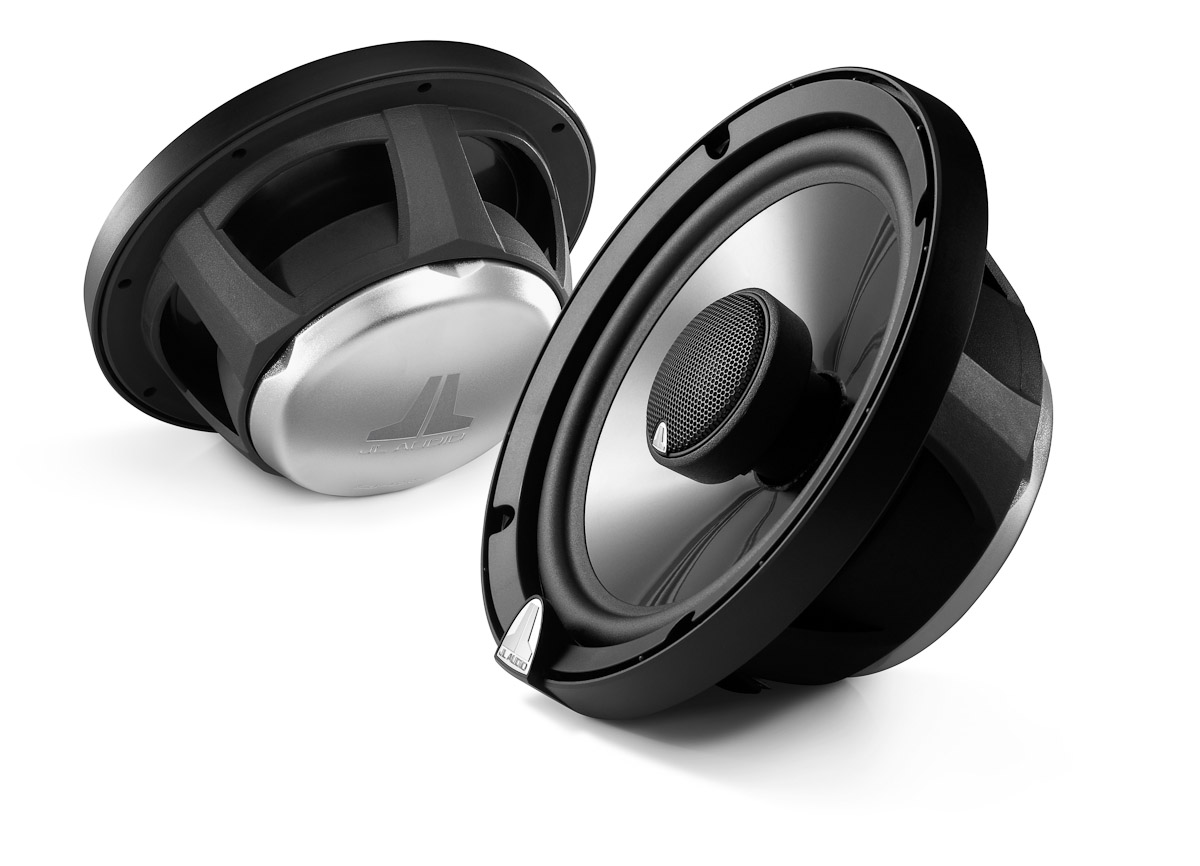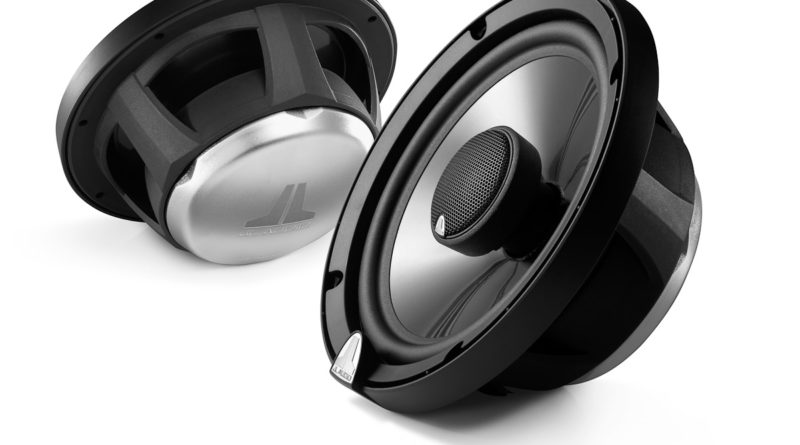JL Audio C3-650 Convertible 2-Way Speakers
Manufacturer: JL Audio
Distributor: Celsus
Website:link
Typical Selling price: £329.99
In A Nutshell
A true in car HiFi item, with depth, and nuance and power to their sound output as well as a serious slice of installation adjustability and up to twelve variations in sonic output as well. Very good looking product. Able to play complex and well produced music and let you hear it ALL. From tiny details in the background, three layers deep into the backing vocals, to the richness of the most wobbly bass lines, with a beautiful detailed midband texture too. An exciting product to own and listen to and scores a serious BEST BUY status, above ‘˜Recommended’. We are told that these JL Audio C3-650 convertible loudspeakers sell really well for being so high quality yet not the top end price, as there is the C5 above these.
Overall 9.5
Sound Quality 9.5
Build Quality 9
Power 10
Efficiency 9
Value For Money 10
As components..

An easy Best Buy within Talk Stuff’s audio genre

And as coaxials
 Editor Review : JL Audio C3-650 Convertible Speakers
Editor Review : JL Audio C3-650 Convertible Speakers
Holy Hell but these things stonk! I know it sounds corny but wow, you really do get what you pay for. For three hundred quid you DO want it ALL. I want pretty, I want tech I want ‘˜Oooh!’ and ‘˜Aaah!’ as I open them and most of all I want chuffing goosebumps when I fire them up, followed by adrenaline and the need to restrain enthusiastic driving urges as said stonking tune comes on.
The JL Audio C3-650 loudspeaker is a delicious item when served as a component. The phase plug in the middle of the midbass driver does its job a treat and the smoothness of the bass is incredible, as is its sheer power, control and muscularity. C3-650 is able to deliver serious detail through the tweeters and the crossover simply doesn’t saturate, such that the sheer dynamism of the bass is epic.These sound HUGE. I admit that while I appreciated the sharp points to the high rise time detail sounds, in my rig with near field and on-axis listening, (which I can change by walking up to the speakers until my head is at ‘˜driver position’ if I want to try off-axis) then I do think that running the passive crossover choices of attenuation for midband and HF presence at ‘-2dB’ as they are factory-set at, is a good idea as the voicing (or how the speaker is made to sound without any filtering by resistors) is set to be strident.
By the way, I do love the clear plastic film that coats the shiny passive crossovers until you finally emplace them. I guess this is also because a significant number of these high end speakers will be being fitted in show installs. Where a cover can be removed to reveal the sheer beauty of the layout and pretty copper choke coils.
After an initial listening test, where I marvelled at these, I returned this morning to give the C3-650’s a sonic pull through with fresh ears. Now, I think this is funny but then I am not grown-up. I struggled for a couple of minutes to get a sound from the rig, before realising that I had unplugged the loudspeakers via their Speakon connectors, so as to leave more room to get past the boxes. (They should have been cut into the side.) It was just like the time at Samurai records’ rehearsals/studio, where I was manager after we converted 11,000 ft.² of the basement of the Hop Exchange near London Bridge. We had just taken delivery of the wedge loudspeakers, mixing desks and rack of amp and equalisation kit for each room. I had spent time unpacking and installing it. However, the initial switch on was to be just the boss and the engineer dude hired to do the fine-tuning. I was very excited but told to stay in the office. After a couple of minutes, a plaintive call up the corridor was heard to summon me. They couldn’t make it work.
I told them that switching on the main amplifiers would help.
So, I had a little chuckle at myself, plugged in the speakers’ boxes and cranked some tunes, including a bit of Robin Thicke’s Blurred lines. and yes here comes that bloody old cliché. I could hear stuff I never had before. And here’s the Rayner difference. Instead of stupid florabundal adjectives, I ask ‘Can you hear what I hear?’ In the early part of the song, in the bits in between the main lyrics, the backing vocals have quieter fiddly spoken bits in the background, that I never heard before. Then, underneath them there is another layer, small blurts and trills, with the odd whoop. Three layers deep. While this is going on, the bass line has depth and texture. You can hear all the components of this very well produced track. It was on the KEF 50th anniversary disc, which is well put together. I promise you this track is reference worthy. And in particular the JL Audio C3-650 loudspeakers do everything that they claim on the box. There is simply more of what you buy a good loudspeaker for. And at this level – and so I should bloody well think – you are discussing High Fidelity response, detail, transient attack, clarity, purity and that ineffable ability to tickle your soul.
I really was mightily impressed with these loudspeakers.
Now the really big deal is the whole component versus coaxial issue. Like admitting I had forgotten to plug in my loudspeakers this morning, I cannot fib to you, since that is my sole stock in trade as a reviewer – naked honesty. We are all subject to bias and influence. Knowing it, fighting it and admitting when you get it wrong is the trick. In this case, I have spent a career testing expensive home loudspeakers as well. The shape and mounting of the deeply solid phase plug right in the centre of the midbass cone, is well established, via acoustic testing in anechoic chambers, to be of benefit by many makers of quality audio. The tweeter assembly and its plastic tower housing, are significantly wider and offer a much less laminar flow for the sound energy to go around. So be it bias, proven technology from many other experts or even a slice of my own prejudice, I used them as components. Incidentally, while these speakers can take fully 75W into each channel of the system, the folks at JL Audio have protected the tweeters in the C3-650 components by dint of addition of a tiny anti-hooligan component. JL understand that while you may have bought lovely posh loudspeakers, you may still have the exuberant nutter in your soul. They don’t want you to blow up your tweeters and be unhappy. Thus, that little flat squashed bean in beige in the passive crossover box that I refer to in the video below is a PTC thermistor or polyswitch. Sometimes a small light bulb is used by a few makers to do this, but these devices last longer. If you over-gun your system and look likely to hurt the tweeter with thermal abuse, well this little lentil thing in your passive crossover will heat up a bit sooner than the coil of the tweeter and go open circuit until it cools down. So you cut out the HF rather than blow it, if daftness happens.
Specifications
Speaker System: 2-way coaxial/component, with flush, surface or pole coax tweeter mounting hardware supplied.
Tweeter: 25mm (1in) Silk soft dome with Ferrofluid cooling and damping and neodymium magnet
Woofer: Injection moulded polymer frame, mineral filled polypropylene cone with butyl rubber surround. One inch voice coil, on Kapton former, low profile, symmetrical roll spider and ferrite magnet.
Passive crossover is an ornate yet sophisticated design with 2nd order high pass and 1st order low pass filtering. Premium Mylar capacitors, large air-core inductor coils avoid saturation. Polyswitch tweeter protection and resistor-pack attenuation of both HF (four position) and midband (three position) presence via multi position jumper switches.
Rated Input Power: 75W
Recommended Amp Power: 15 to 100W per channel RMS
Efficiency: 90.0dB @1/W/1m
Frequency Response: 48Hz to 25,000Hz ±3dB

